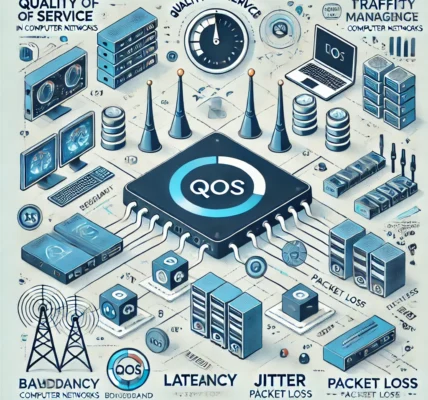Social Selling the Inbound Way: How Does It Work and Why?
In today’s digital age, traditional sales methods are being replaced by more engaging and customer-centric approaches. One such approach is social selling, which focuses on building relationships and trust through social media to drive sales. This method aligns closely with inbound marketing, where the emphasis is on attracting potential customers by providing valuable content and solutions rather than aggressively pushing products.
In this article, we will explore how social selling the inbound way works and why it’s an effective strategy for modern businesses.
Table of Contents
- What is Social Selling?
- What is Inbound Marketing?
- How Social Selling and Inbound Marketing Work Together
- The Social Selling Process
- Why Social Selling Works
- Tips for Implementing Social Selling
- Conclusion
What is Social Selling?
Social selling is the process of using social media platforms to find, connect with, and nurture leads. Rather than relying on cold calls or intrusive sales tactics, social selling leverages social media networks to engage with potential customers, answer questions, share relevant content, and build relationships.
This approach focuses on adding value to the customer’s journey, helping them solve problems, and positioning your brand as a trusted resource. Salespeople use platforms like LinkedIn, Twitter, Facebook, and Instagram to engage with prospects and provide valuable insights, which helps build trust over time.
Social selling is not about directly pitching products; it’s about building credibility and staying top of mind when potential customers are ready to make a purchase decision.
Key Elements of Social Selling
- Networking: Building connections with potential customers and industry influencers.
- Content Sharing: Sharing relevant, insightful content that resonates with your target audience.
- Engagement: Participating in conversations, answering questions, and interacting with followers and prospects.
- Building Trust: Establishing yourself as an expert in your field by offering valuable insights and advice without being overly promotional.
What is Inbound Marketing?
Inbound marketing is a marketing strategy that focuses on attracting potential customers by offering helpful, relevant content and experiences. Unlike traditional marketing methods that interrupt the audience with ads or cold outreach, inbound marketing is about providing value upfront, which naturally draws customers to your brand.
The key stages of inbound marketing are:
- Attract: Drawing potential customers to your business through content such as blogs, social media posts, videos, and SEO optimization.
- Engage: Interacting with prospects and providing solutions to their problems through email marketing, webinars, or chatbots.
- Delight: Continuing to support and engage customers after a sale, encouraging loyalty and repeat business.
Inbound marketing is centered around the customer and their journey, creating a more natural and trustworthy experience.
How Social Selling and Inbound Marketing Work Together
Social selling and inbound marketing are closely aligned, as both focus on building long-term relationships rather than quick sales. By combining these approaches, businesses can create a seamless journey for their customers that begins with providing valuable content and continues through nurturing and building trust over time.
Here’s how social selling complements inbound marketing:
- Content Distribution: Inbound marketing provides valuable content, and social selling is a way to distribute that content through social media channels. Salespeople can share blog posts, case studies, or videos that resonate with their audience, positioning themselves as thought leaders.
- Engagement: Social selling emphasizes engagement on social platforms, which works in tandem with inbound marketing’s goal of nurturing leads. Salespeople can answer questions, comment on posts, and provide helpful solutions that align with the inbound methodology.
- Trust Building: Inbound marketing aims to build trust by offering valuable content. Social selling enhances this by establishing personal connections with prospects, helping to build deeper trust and credibility.
Together, social selling and inbound marketing create a customer-centric approach that aligns with how modern buyers prefer to engage with brands.
The Social Selling Process
To effectively implement social selling the inbound way, sales professionals follow a structured process. Here’s an overview of the key stages:
1. Research and Identify Prospects
The first step in social selling is identifying potential leads. This involves researching target customers on social media platforms to understand their interests, needs, and challenges. Tools like LinkedIn Sales Navigator or Twitter’s search functionality help salespeople locate individuals who fit their ideal customer profile.
2. Build Relationships
Once prospects are identified, the focus shifts to building relationships rather than making a hard sell. Sales professionals engage with prospects by liking or commenting on their posts, sharing relevant content, and answering questions. Over time, these interactions help build a relationship based on trust and mutual respect.
3. Share Relevant Content
Sharing valuable and relevant content is a key aspect of social selling. Salespeople can share blog posts, industry reports, white papers, and other educational materials that address the prospect’s needs or pain points. This positions the salesperson as a knowledgeable resource, helping to build credibility.
4. Engage in Conversations
Social selling is not a one-way street; it involves active engagement. This means responding to comments, answering questions, and joining industry-related conversations. By being a part of these discussions, sales professionals can showcase their expertise and stay top-of-mind for prospects.
5. Nurture and Follow Up
As the relationship develops, it’s important to nurture the prospect through personalized follow-ups. This could involve sending a direct message, offering further assistance, or inviting them to a webinar or event. The key is to remain helpful and not overly pushy.
6. Transition to a Sales Opportunity
After building trust and nurturing the relationship, the time may come to transition to a sales conversation. This should feel natural, as the prospect will already see the salesperson as a trusted advisor. By this stage, the prospect is more likely to be receptive to discussing their needs and how the salesperson’s product or service can provide a solution.
Why Social Selling Works
Social selling is an effective strategy for several reasons:
- Buyer Behavior Has Changed: Today’s buyers prefer to research products and services on their own before engaging with a salesperson. Social selling caters to this shift by providing valuable content and building relationships before the buyer is ready to purchase.
- Builds Long-Term Relationships: Social selling focuses on long-term relationships rather than quick wins. By consistently offering value and maintaining a presence on social media, salespeople stay top-of-mind when prospects are ready to buy.
- Positions Salespeople as Experts: Social selling allows sales professionals to showcase their expertise by sharing insights, content, and advice. This builds credibility and trust, making prospects more likely to engage.
- Helps with Personalization: Social selling enables salespeople to gather insights about their prospects’ needs and preferences. This allows for more personalized and meaningful interactions, which improves the chances of converting leads into customers.
Tips for Implementing Social Selling
To make social selling work effectively, businesses and sales professionals should follow these tips:
- Focus on Relationships, Not Sales: The key to social selling is building relationships first. Avoid the temptation to push products too early in the process.
- Be Consistent: Social selling requires ongoing effort. Regularly engage with prospects, share content, and participate in conversations to maintain your presence on social media.
- Use the Right Tools: Leverage tools like LinkedIn Sales Navigator, Hootsuite, or Buffer to manage your social media presence and track interactions with prospects.
- Share Valuable Content: Ensure the content you share is relevant to your audience and provides real value. Avoid overly promotional content, and instead focus on educational resources.
- Listen to Your Audience: Pay attention to what your prospects are discussing on social media. This will help you tailor your approach and offer solutions to their specific challenges.
- Measure Your Success: Track key metrics such as engagement rates, connections made, and the number of leads generated through social selling. This will help you refine your strategy over time.
Conclusion
Social selling, when combined with an inbound marketing approach, is a powerful way to build relationships and trust in the digital age. It focuses on providing value to potential customers, engaging with them meaningfully, and nurturing long-term relationships that lead to sales. As buyer behavior continues to evolve, adopting social selling practices is essential for businesses looking to succeed in a competitive market.
By focusing on building trust, sharing valuable content, and engaging in authentic conversations, social selling helps create a more personalized and effective sales process, aligning with the principles of inbound marketing.




